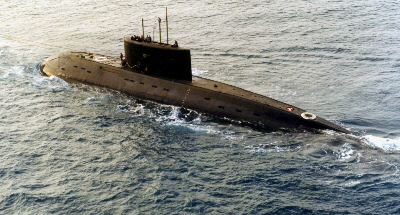
Official DoD photo of Kilo #3. The Sixth Fleet tracked the submarine's transit through the Med.
| CURRENT INTELLIGENCE FOLDER |
LAST UPDATED: 24 JAN 97
These are a number of items pertaining to Russian naval systems that I personally found rather interesting. All of the material appearing here is original, based on the cited sources, so the interpretations and the inevitable errors are mine alone. Incidentally, if it's here, there's a good chance that there's some sort of ongoing discussion about it in sci.military.naval; this group is full of people more knowledgeable than I in these fields and is highly recommended if you're interested in finding out more. Thanks to Bill Green for his excellent summaries of Morskoi sbornik, robin@ridgecrest.ca.us, and to Nikolai Skrynnikov for his many updates on the Admiral Kuznetsov's latest deployment. Send your corrections, updates, and/or contributions to amraam@netcom.com.
Previous news items, mid-1995 to mid-1996.
|

Official DoD photo of Kilo #3. The Sixth Fleet tracked the submarine's transit through the Med.
The first of what is now being called the Boreas-class of SSBNs will enter service just after the turn of the century, and will be replacing the aging Typhoons and Delta IVs.
After sea trials are completed, Petr Velikiy is bound for the Russian Pacific Fleet.